Present with confidence and clarity, no matter your audience
Our role as marketers working across disciplines, departments and media means that we’re often required to present our plans to a range of different stakeholders. On most occasions, these may be simple status updates and email correspondence with direct colleagues or line managers.
However, there are also times when we may need to present to senior managers and leaders in order to obtain buy-in or support for a concept or big idea.
Download our Premium Resource – Template white labelling briefing for agencies and consultants
A guide recommending templates to amend when delivering marketing services.
Access the
Whilst it’s important to acknowledge that every senior stakeholder is different, there are some common characteristics to bear in mind:
- Highly-focused – their attention will be concentrated on a specific number of objectives and projects.
- Action-orientated – they’ll often have a clear ‘bias for action’, prioritizing the tasks and actions that are likely to drive the most effective results.
- Time-poor – they may be very time-poor, running from one meeting to another and juggling multiple requests at a time.
It’s important to consider the above as you’ll notice that your presentation and communication style will need to be tailored accordingly based on your audience. Whenever you present, it’s likely you will need to speak to different stakeholders with varying needs for detail:
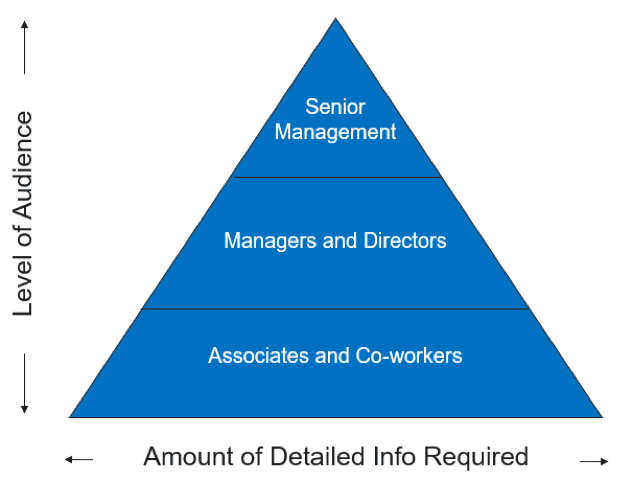
Senior stakeholders are unlikely to have the same amount of time, attention and awareness as direct colleagues and line managers and are, therefore, an audience worth thinking about carefully before starting any interaction.
Within this post I’m going to cover three broad areas to help you present ideas in the most effective way:
- Set the agenda/ clarify objectives
- Write a logical storyline
- Deliver the presentation
1. Set the agenda/clarify objectives
Before you start building your presentation you need to be crystal clear very early on about your overarching objective. This will help set the context and narrative for everything that follows.
Remember: The objective of the communication is different from the subject:
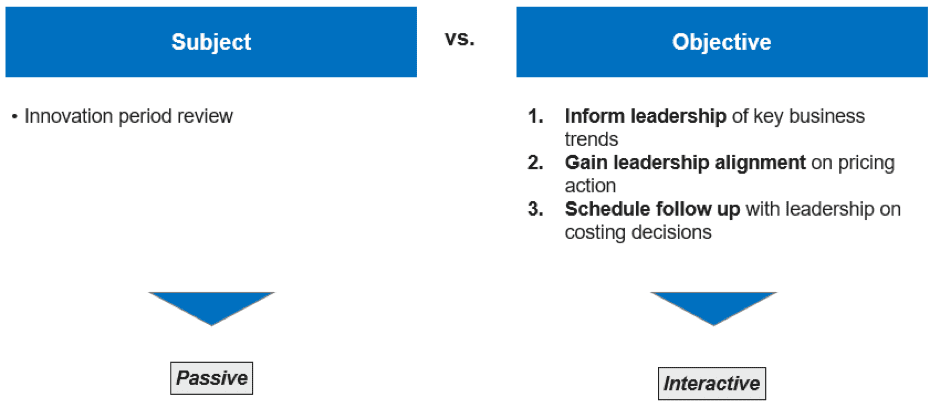
The more passive, subject-orientated approach is often what’s communicated whereas a more direct, interactive approach is required to set the right expectations for the meeting.
Stop and think critically about the meeting objective and make it clear at all stages:
- Before you develop presentation content
- On the meeting notice
- At the meeting itself
Most presentations are designed to drive some type of change so decide up front the route you’re looking to take:
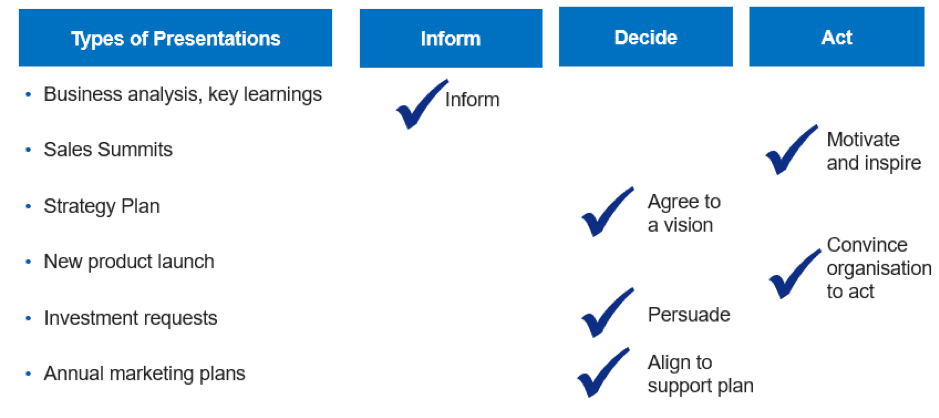
All three routes are appropriate for developing presentations – there will be times when you require decision or action. Sometimes you will be looking to provide some critical information or update. Once you’re clear on the objective, however, the next step is to develop a strong, logical narrative.
2. Write a logical storyline
The decisions you make around the story you develop will be crucial for gaining the attention you need to meet your objective. Keep three things in mind when you build your storyline:
Put your audience front and centre
- Study who they are and what topic/style appeals to them
- Anticipate questions, objections, etc.
Make it easy for the audience to follow your storyline
- Background (situation, complication), key question(s), answer
- Answer order: reveal-first or reveal-last
- Create 1-minute, 5-minute and 30-minute versions
Plan ample time to build and adjust your story
- Draft your storyline early on in the project
- Vet the storyline and findings with key stakeholders
Consider how you will tailor your presentation to your audience’s expectations and needs:
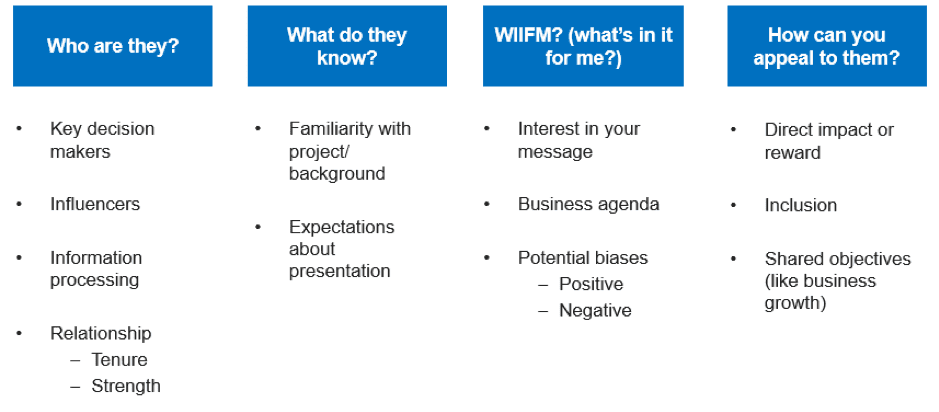
Prepare in advance: What are the three to five questions or responses that would leave you speechless?
Once you have established a clear picture of your audience, consider the way you will structure the flow of your presentation. There are typically two main approaches:
Answer first
- Develop a hypothesis (a probable “answer”) from an early fact base and business judgment
- Then test the hypothesis with facts and analysis
Diagnostic first
- First, collect facts
- Then infer the answer
There are pros and cons for both approaches:
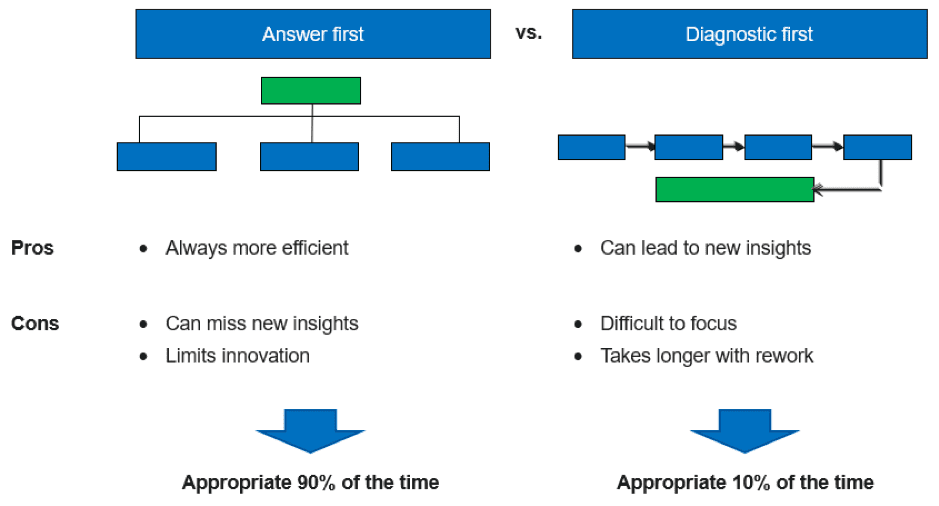
There are six key steps to creating an ‘answer-first’ structure:
1. Situation
Describe the background to the problem.
2. Complications/ constraints
Define the major problems and constraints facing the analysis. What has changed?
3. Critical question
Formulate the primary question to be addressed by the analysis.
4. Hypothesis/ answer
Answer the question to resolve the complications. Each hypothesis should be supported by a "logic tree”.
5. Primary assertions
Key assertions, which prove the hypothesis, should be mutually exclusive and collectively exhaustive. Each is supported by second level facts which verify the assertion.
6. Secondary assertions
Facts should verify the primary assertions and be explicit enough to translate into an effective presentation.
The hypothesis/answer is the cornerstone of the answer first ‘logic tree:
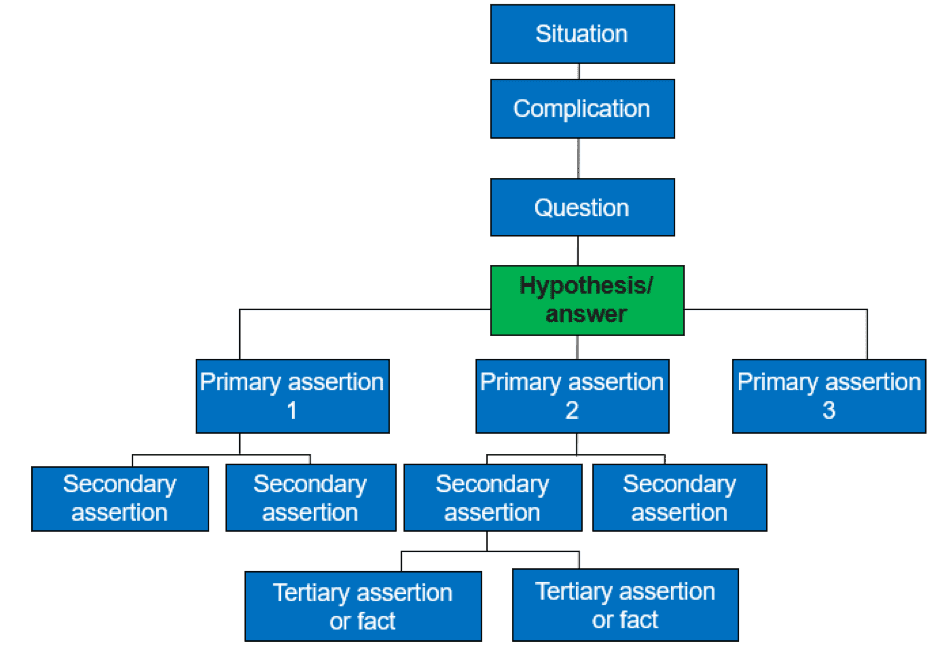
You can create your initial hypothesis very early and then refine it over time, although your hypothesis should be at its most advanced stage when presenting to senior stakeholders:
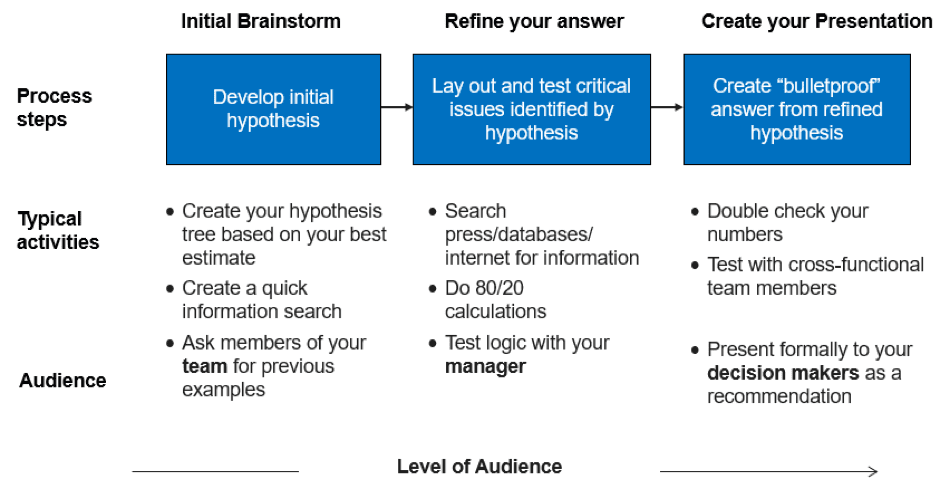
By using an ‘answer-first’ approach you can arrange your presentation in a clear, logical structure that builds out from an initial answer/ hypothesis. For example, imagine the following scenario:
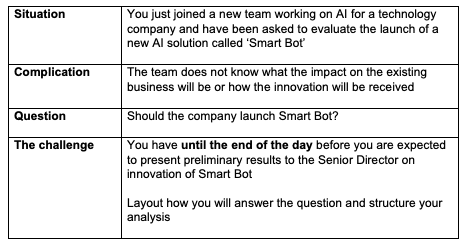
An inductive, bottom-up ‘diagnostic-first’ approach may look something like the following:
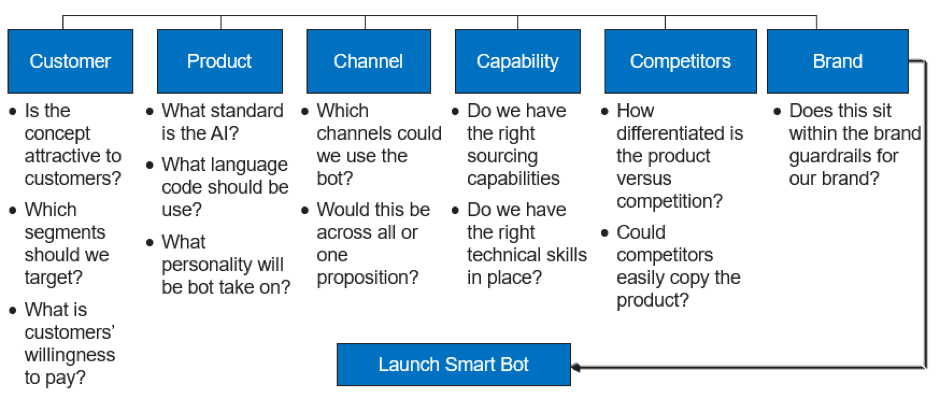
Whilst this approach has many merits, it ultimately has no hierarchy of questions/issues and it’s difficult to prioritize analysis.
On the other hand, a deductive, top-down ‘answer-first’ approach enables you to effectively support a central hypothesis with a series of supporting assertions:
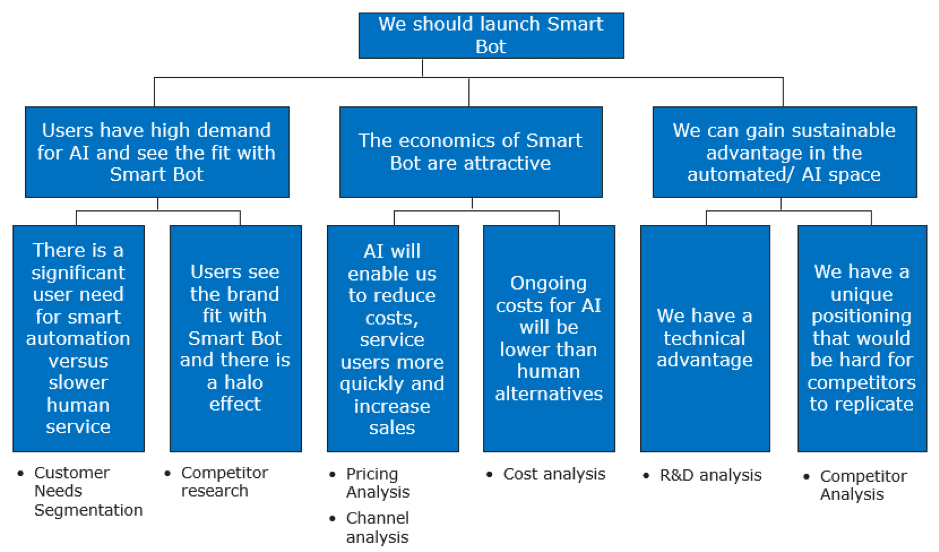
The primary and secondary assertions help justify the direction you’re proposing and adds additional credibility to your argument.
3. Deliver the presentation
The third and final stage is the delivery. After all the practice and prep this stage is crucial for landing the right messages in the right way. There are a few key points to keep in mind:
Practice your ‘movie pitch’
As referenced earlier on in the post, there is often a range of different stakeholders with varying needs for detail so be prepared to state your message at three different levels:
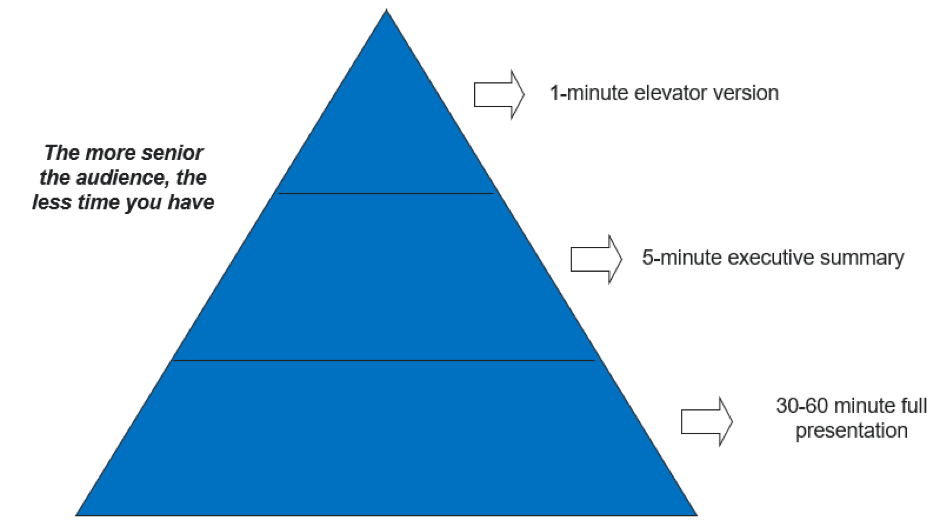
It’s sometimes useful to consider how movies are pitched to studio executives. They start with a top-line synopsis to grab attention before following up with more detail.
Set the context
Depending on what has or hasn’t been communicated in the past, it’s unlikely your audience will automatically remember what you told them last time. Depending on who’s in the room outline set the appropriate level of context:
- What happened last time you met
- What’s changed
- Your objective for today
Remember: Your project isn’t always as important to them as it is to you so cover only the necessary details as headlines.
Choose your words wisely
Your choice of words can have a big impact on the message you want to deliver. Always be mindful of your audience and consider what will resonate most effectively. Some useful tips include:
- Avoid jargon and acronyms unless they are universally understood.
- Think about both how you speak and what you say.
- Use ‘directive’ language and ‘active’ speech:
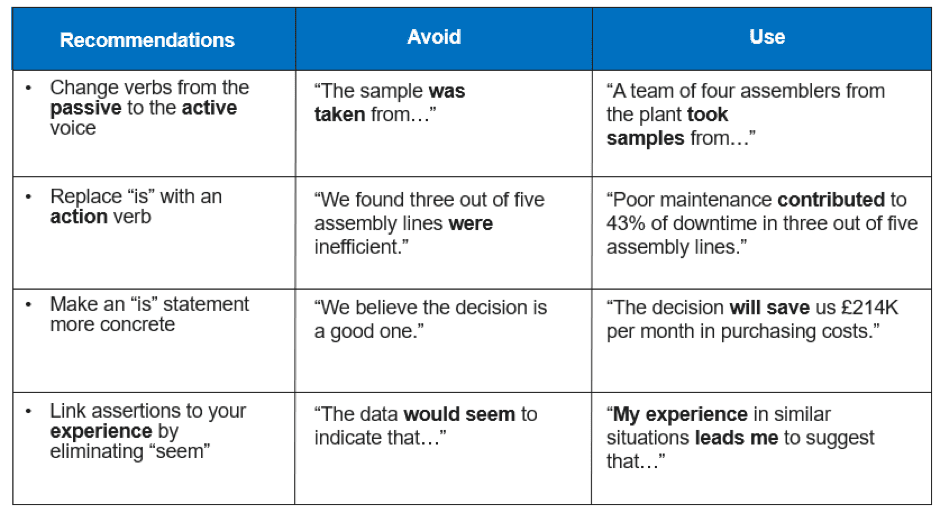
Conclusion
Presenting to different stakeholders, especially senior managers and leaders, is a great opportunity to align actions, sell in a concept or achieve buy-in for a big idea. Senior management are often very busy and time-poor so spend time early on in the process crafting a message that will resonate with your intended audience.
In summary, remember the following three steps:
- Set the agenda
- Write a logical storyline
- Deliver effective and persuasive presentations



















